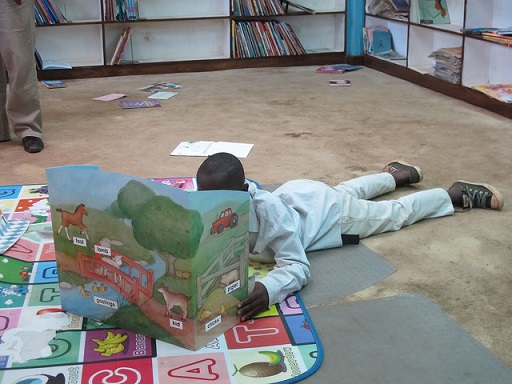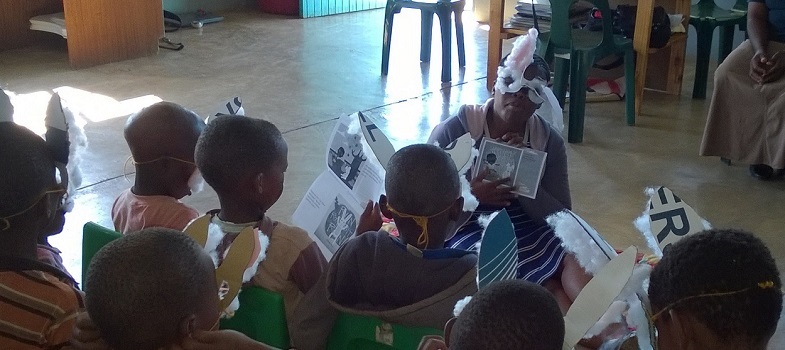Where do reading activities fit into the weekly timetable?
Teaching early reading to young children requires activities that allow the children to:
- play an active part
- use their bodies and voices
- draw on everyday experiences to help make connections between what they’ve read and their own lives.
Short activities repeated throughout a week can help young children by reinforcing what they have been learning. This is something that you read about in Case Study 1.2, as Juba was planning to build on her lesson the following day.
On your timetable there will be specific times dedicated to reading. However, reading activities don’t need to be limited to literacy times – subjects such as numeracy or life skills could provide opportunities for literacy development. For example, if children are learning about personal hygiene in life skills, you could emphasise the words for the different parts of the body. Alternatively, you could use a counting story to practise numbers to 10.
Activity 1.8: Planning for early reading

Have a look at your weekly planning for next week, see if you can find any stories that you could use in other subjects during the week.
As part of your planning, it helps to have a timetable of lessons and activities to make sure that children develop the different skills necessary for early reading. This planning should be done with other foundation teachers at your school so that you can share ideas and resources. If your class is taught by other teachers as well, make sure you work together to plan reading activities, whatever the subject.
Here is an example of a daily timetable [Tip: hold Ctrl and click a link to open it in a new tab. (Hide tip)] for Early Childhood Development teacher Doreen. At this level, every day follows the same pattern.
Working with a partner, add more detail to this plan, making sure that the day includes a variety of reading-based activities. As well as stories, a wide range of different kinds of activities can be used: songs and games are a good way to get children reading. You could include specific songs, stories and resources you might use, or games you might play. Make a note of the resources you would need.
If you have your own class, you could do the exercise using your own daily or weekly timetable instead.
Discussion
Your planning can start at a very general level – for example, what you want the children to achieve by the end of each term – and then you can work on the details for each month in a term, and each week in a month.
Alternatively, you could plan from the details of a weekly timetable, and then build up to monthly and term planning. Some people work best thinking of the ‘big picture’ and then working down to the details; other people like to start with the details and then work up to the bigger outcomes.
Each week it is sensible to develop the habit of carrying out an audit of the language and literacy activities completed that week. This will ensure that you maintain a good variety of activities, over time.
Looking at effective teachers of reading



